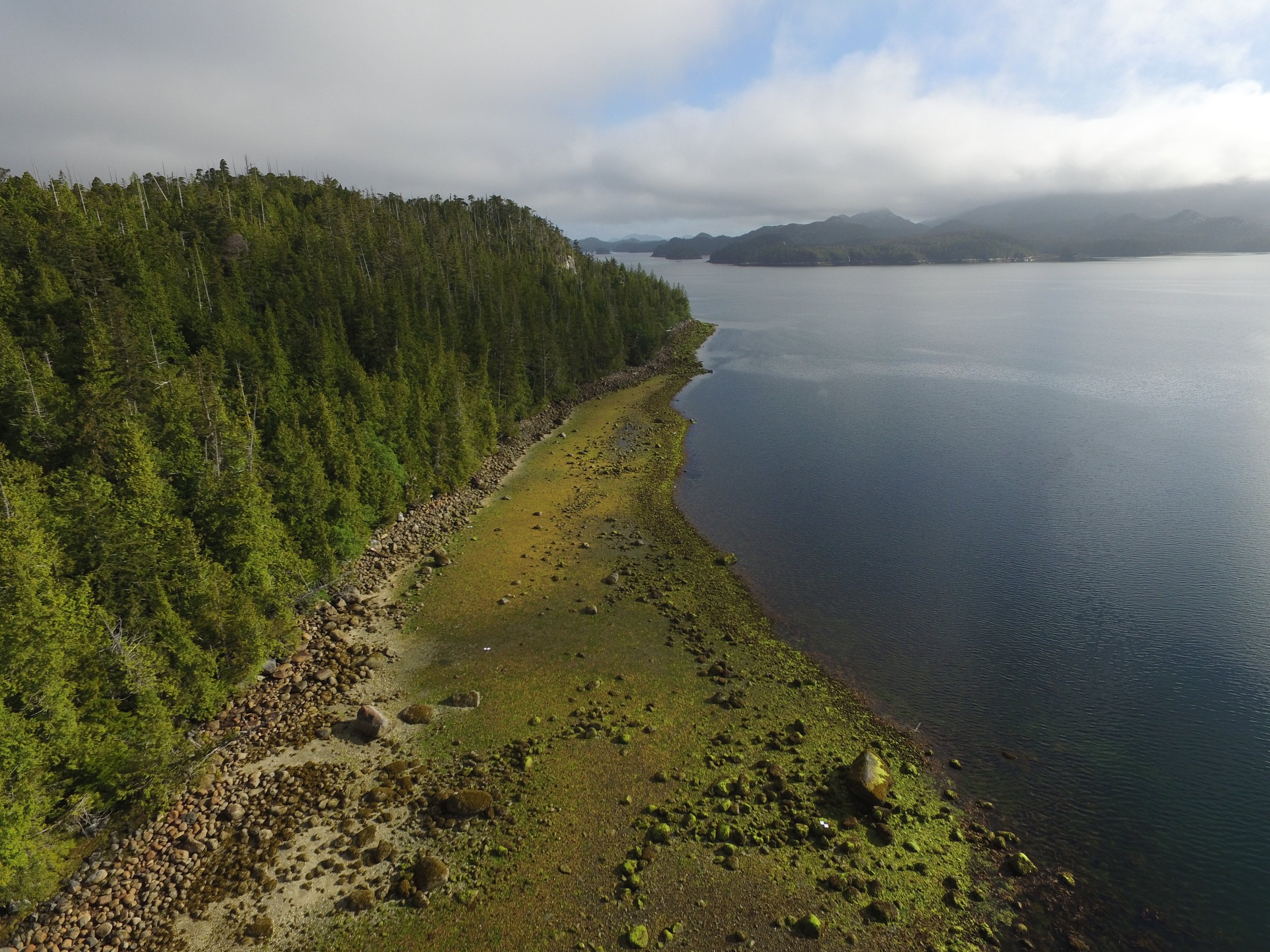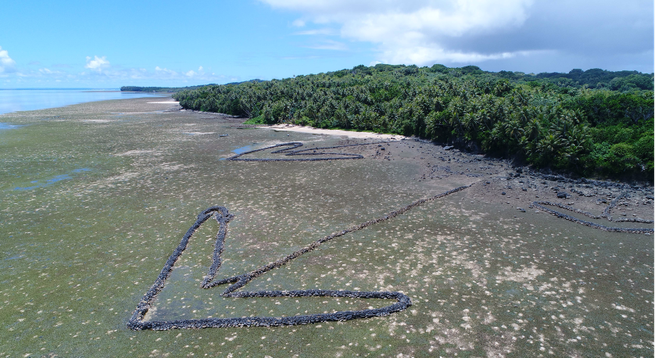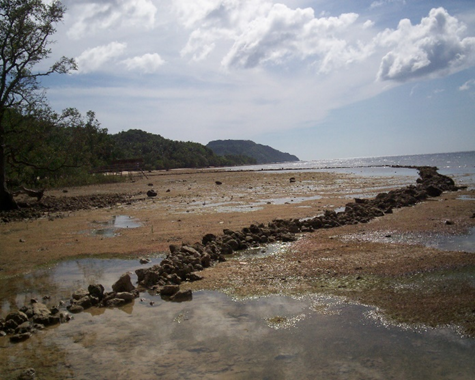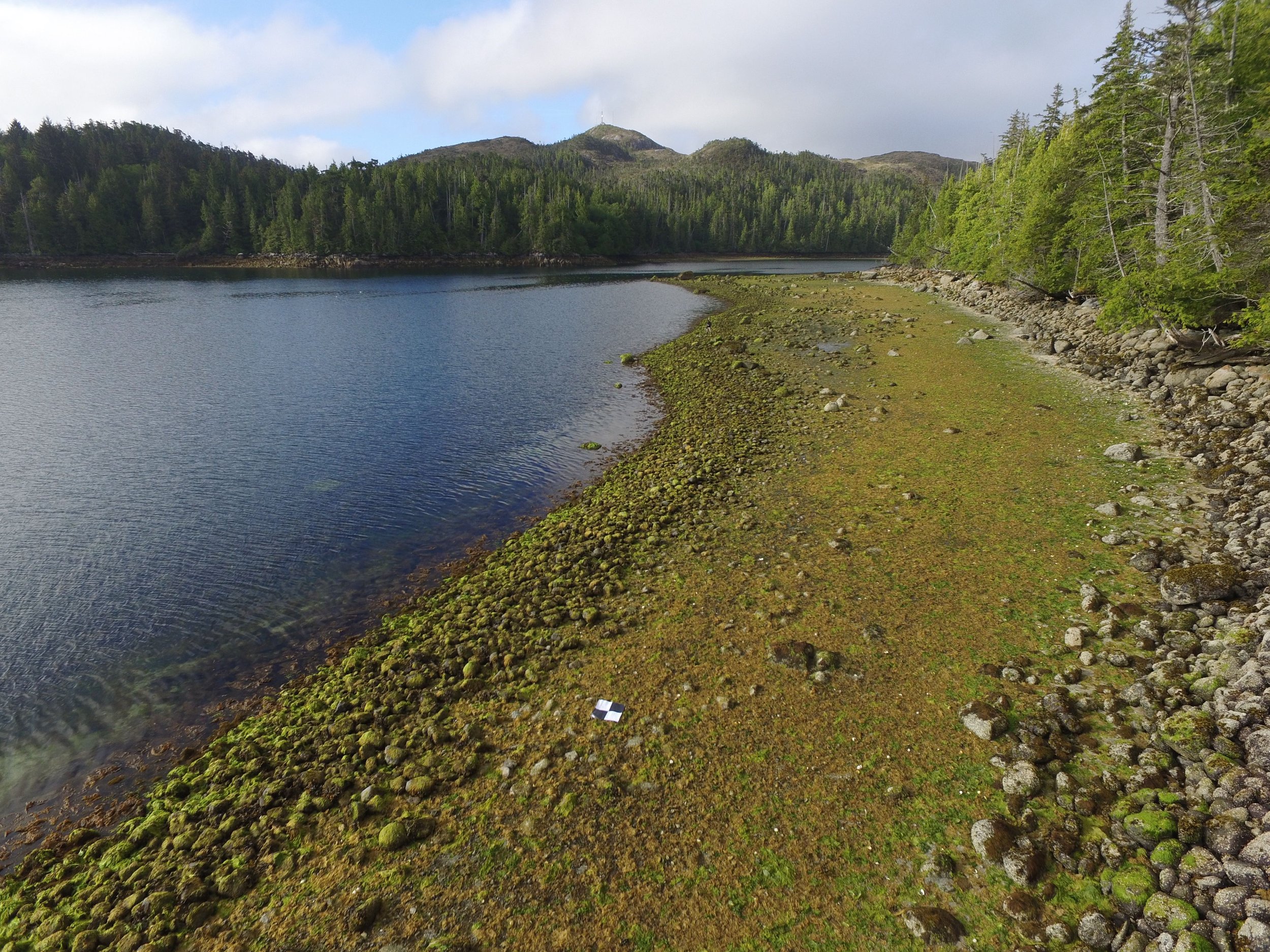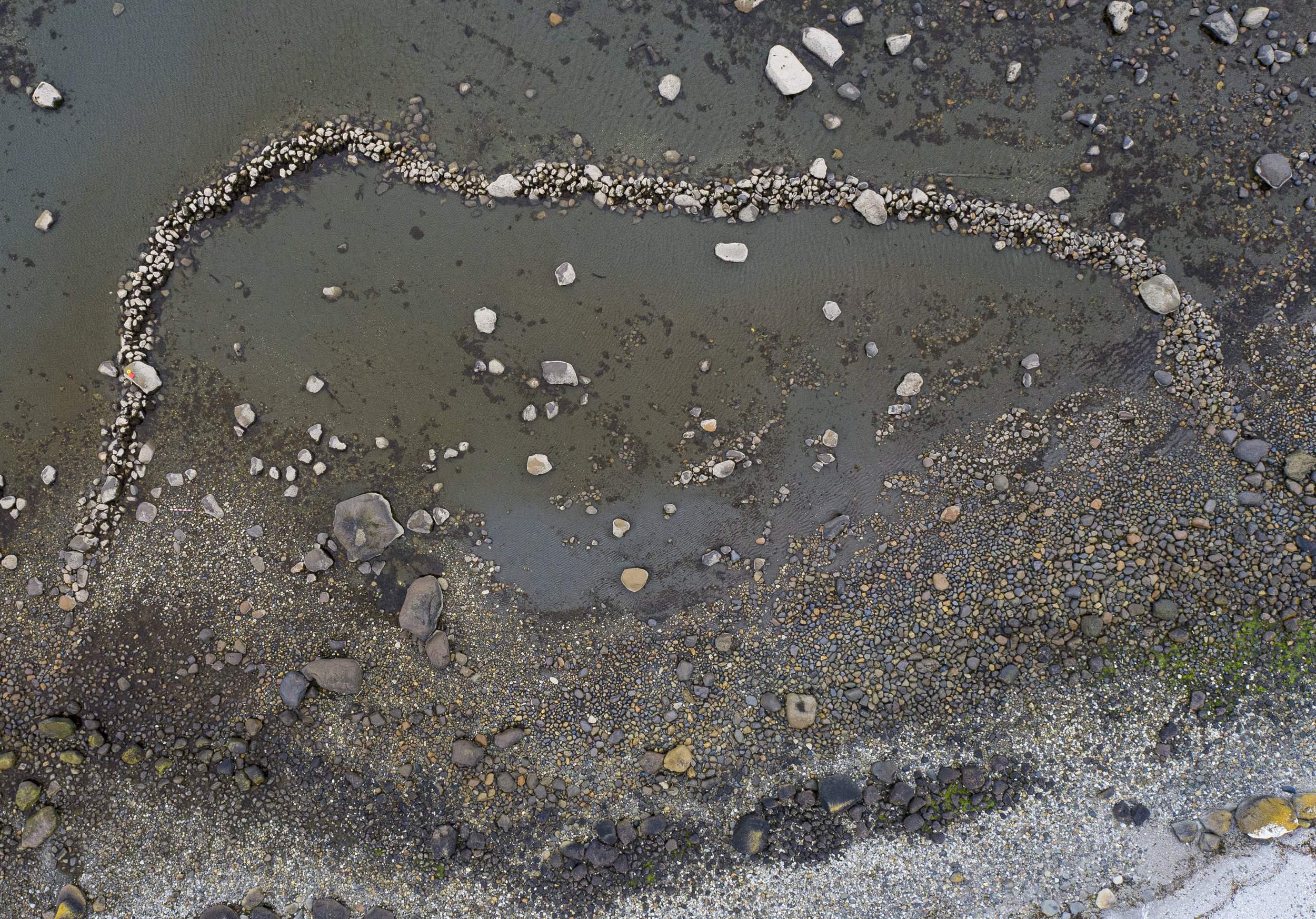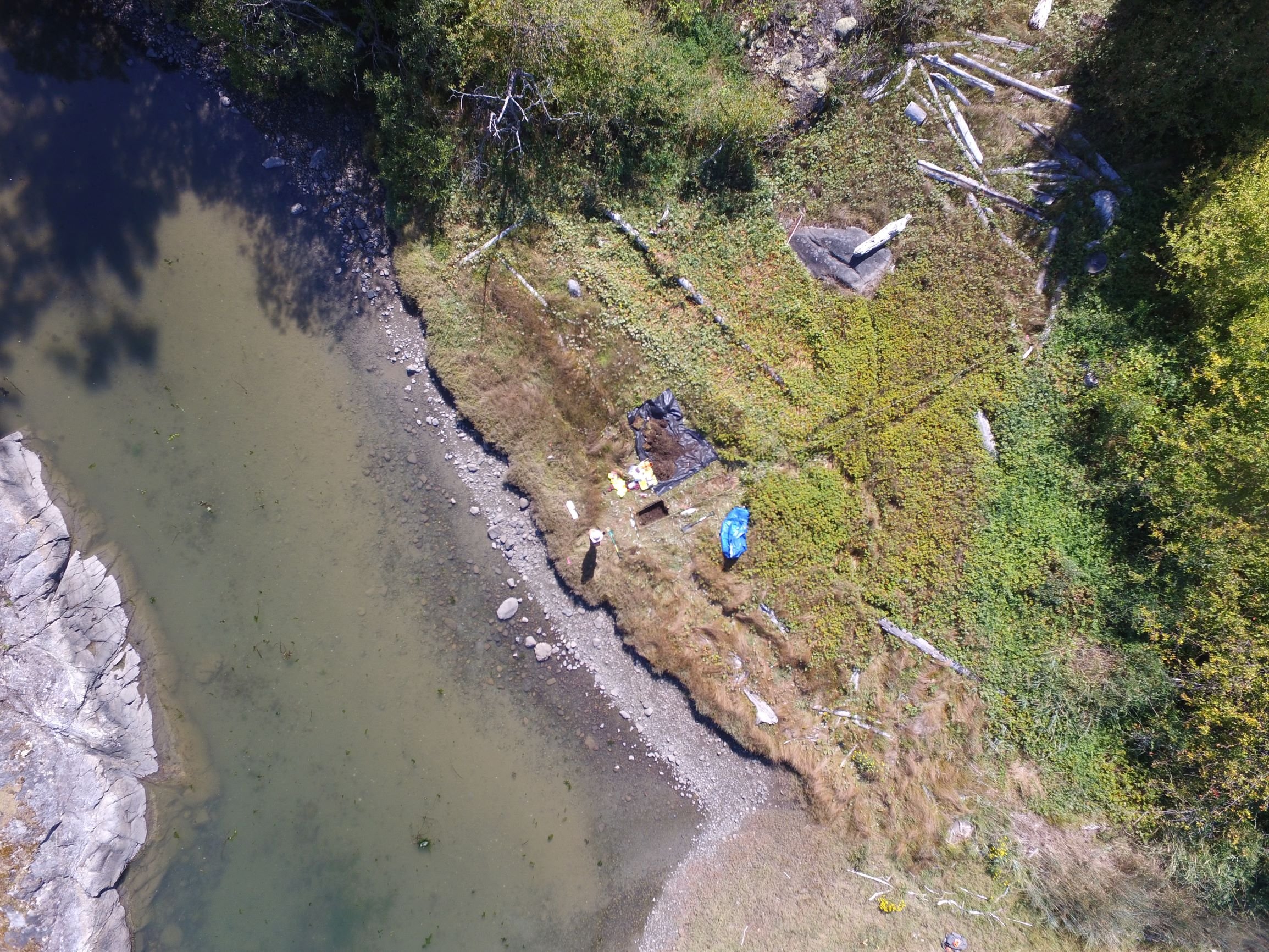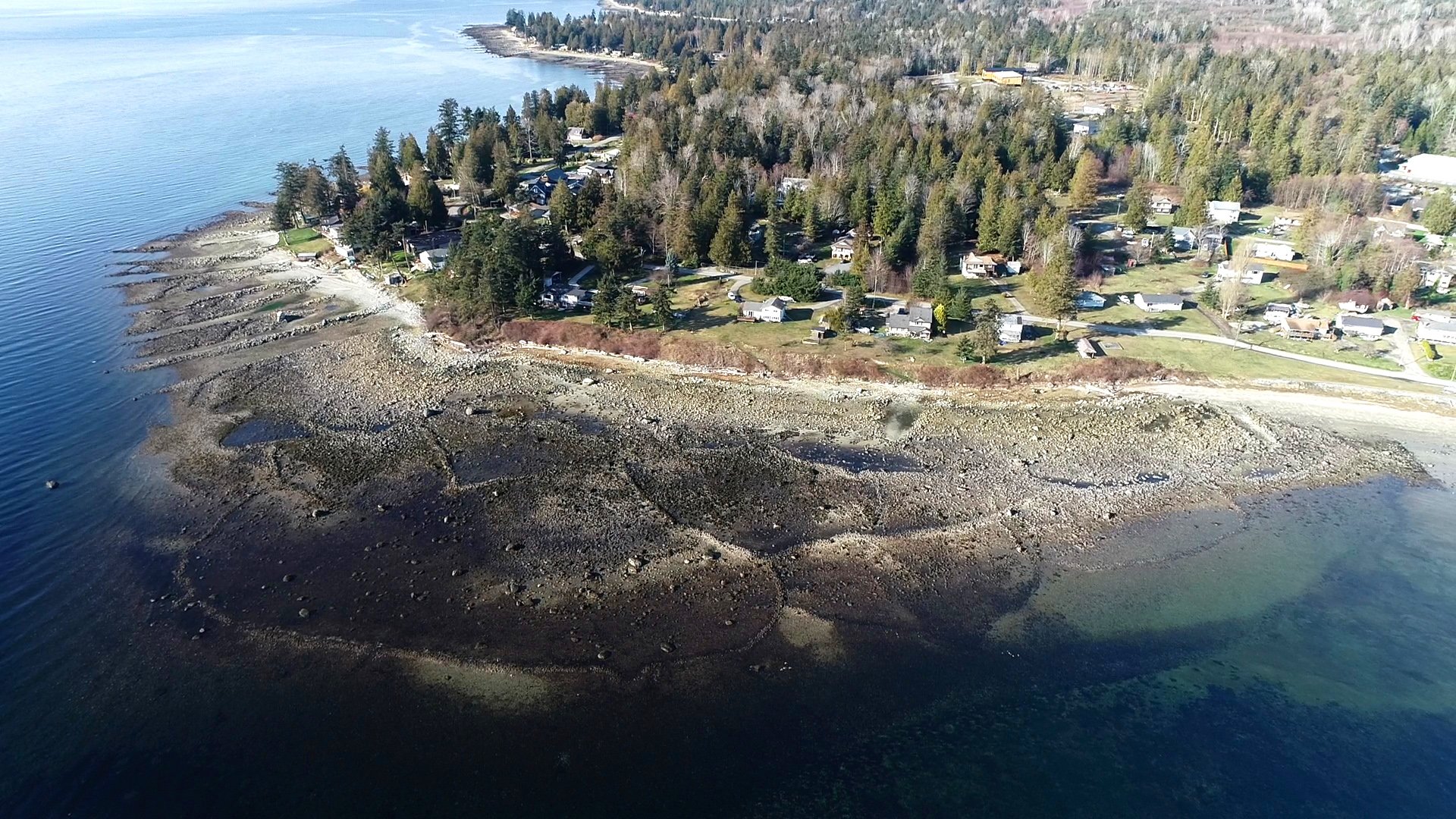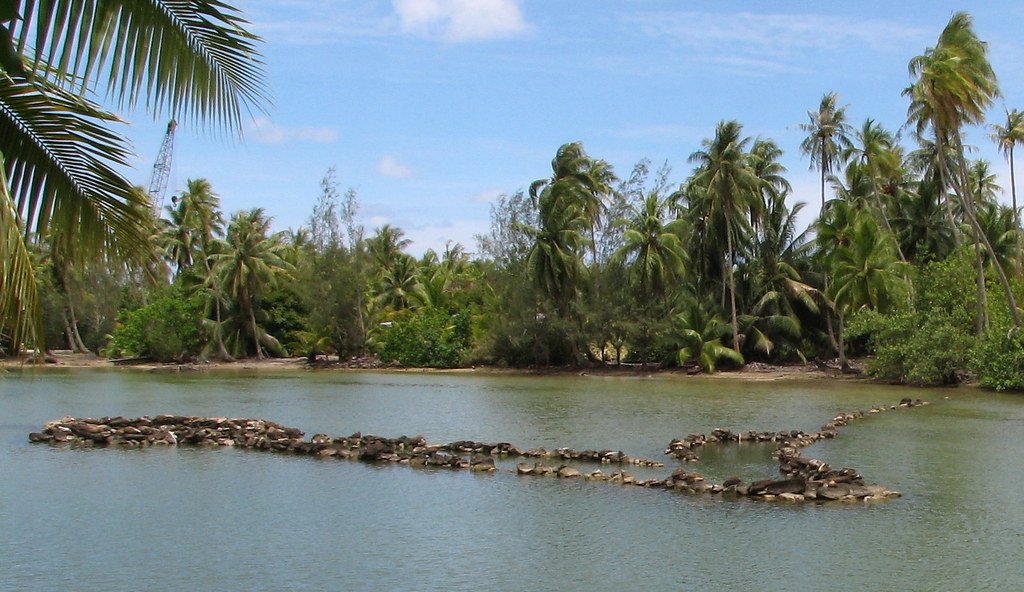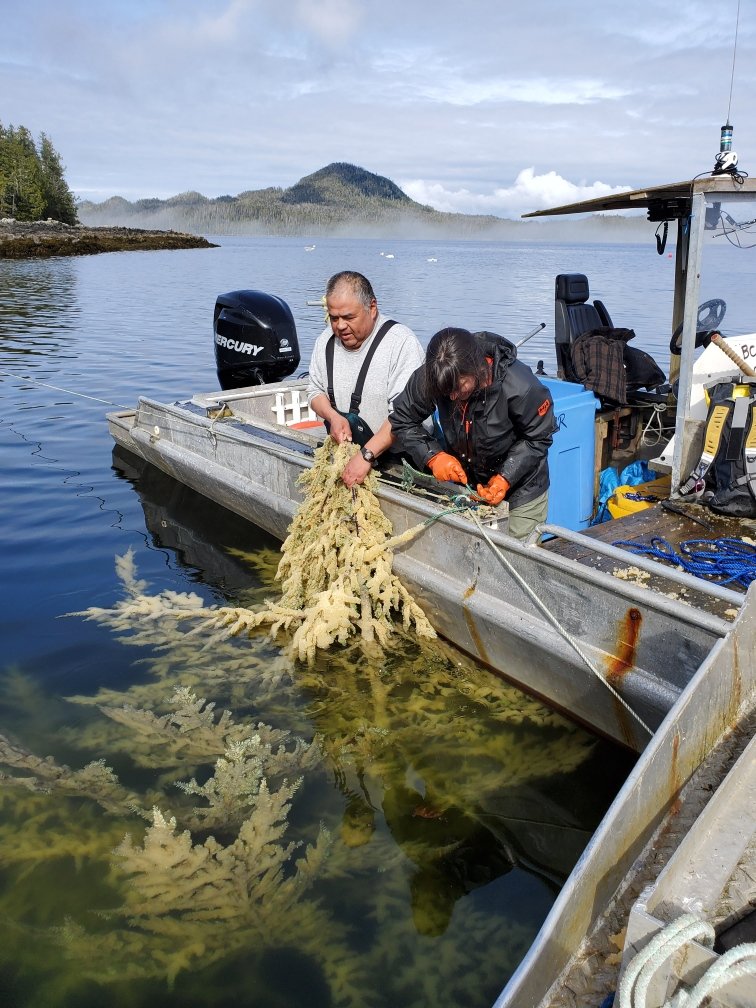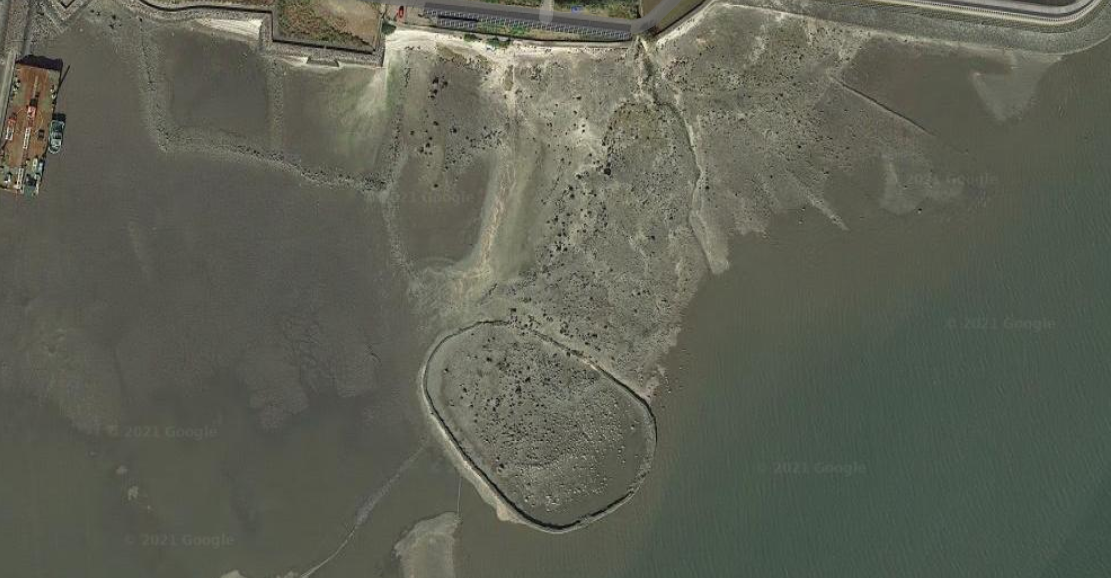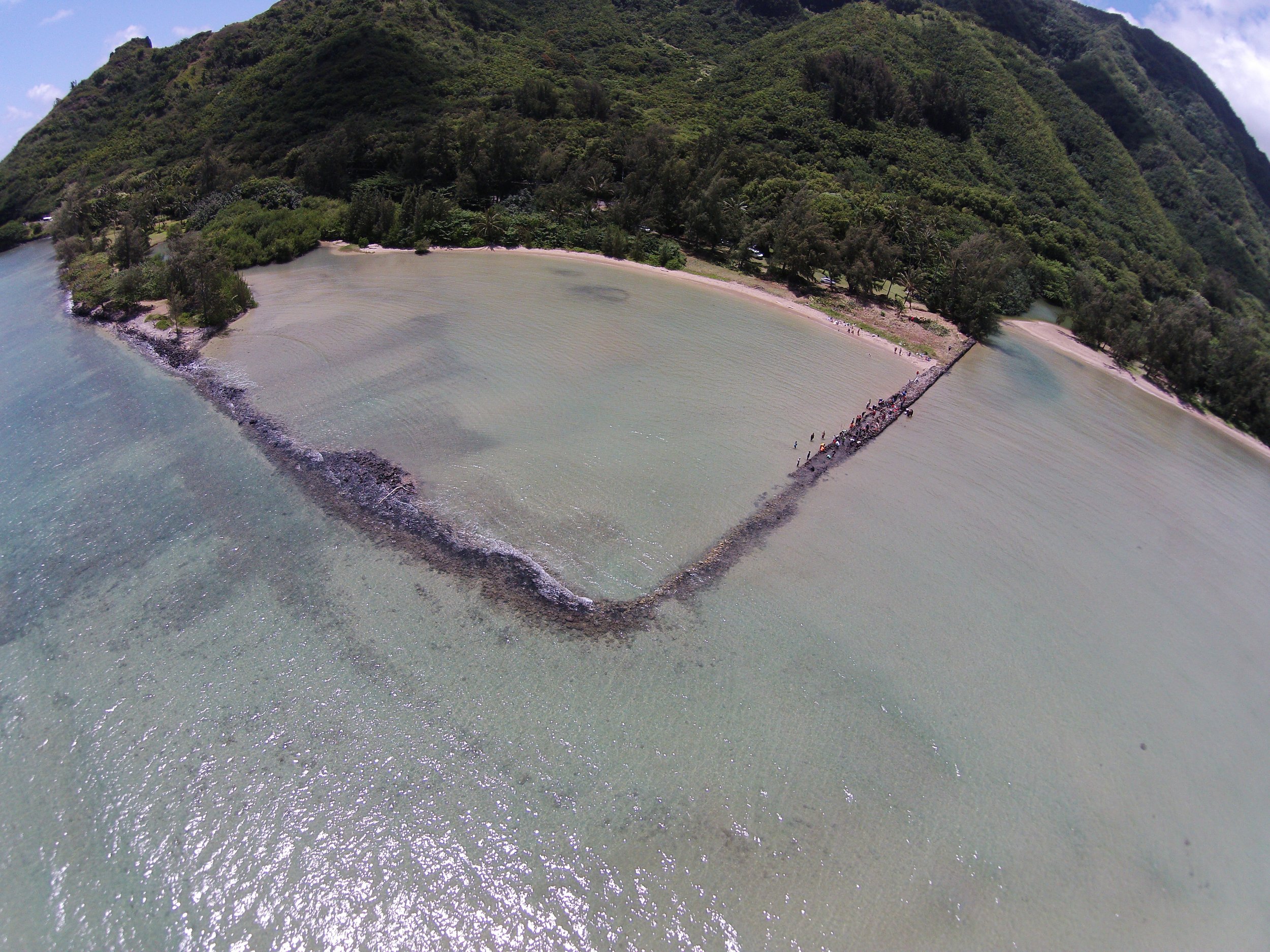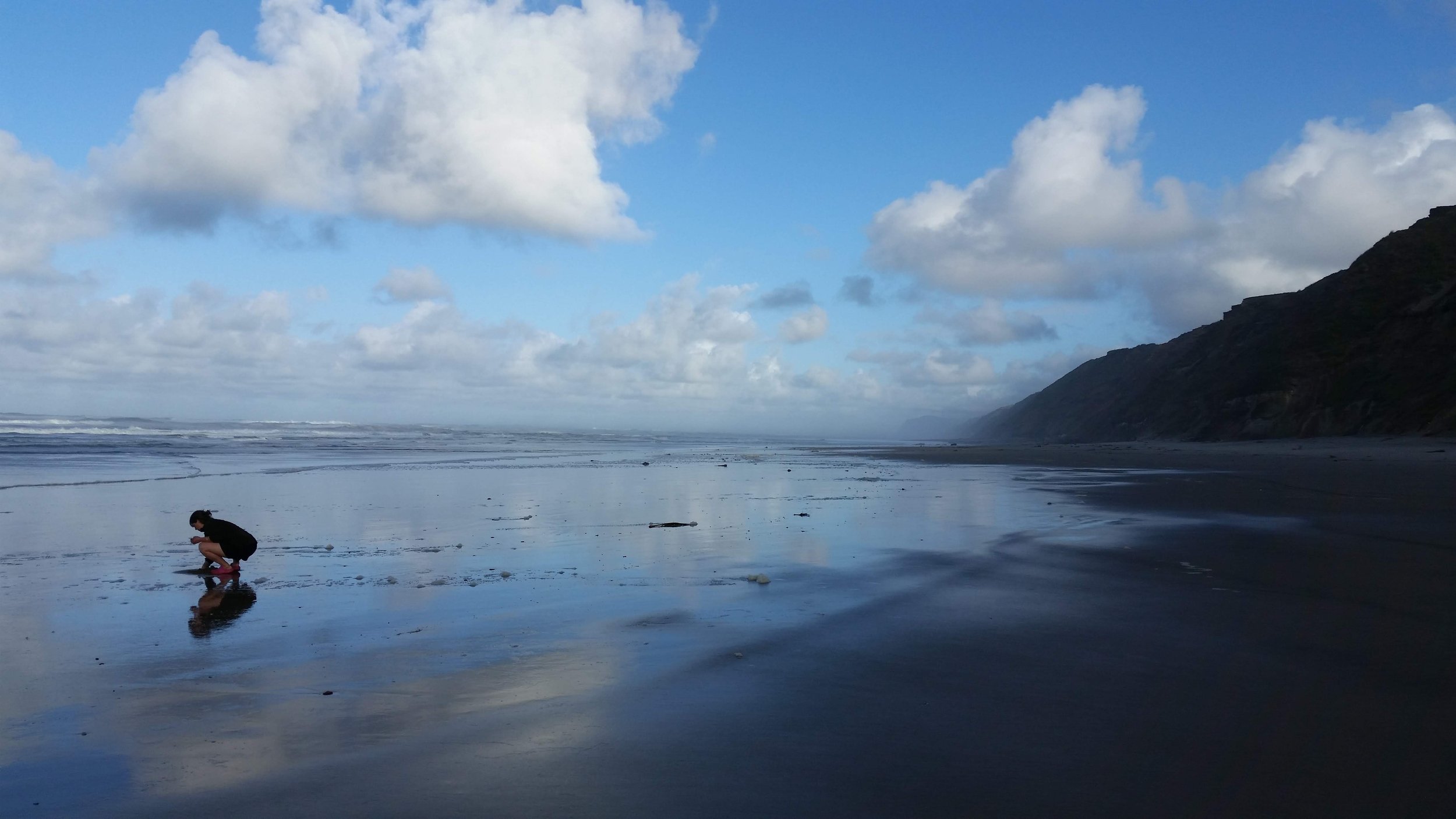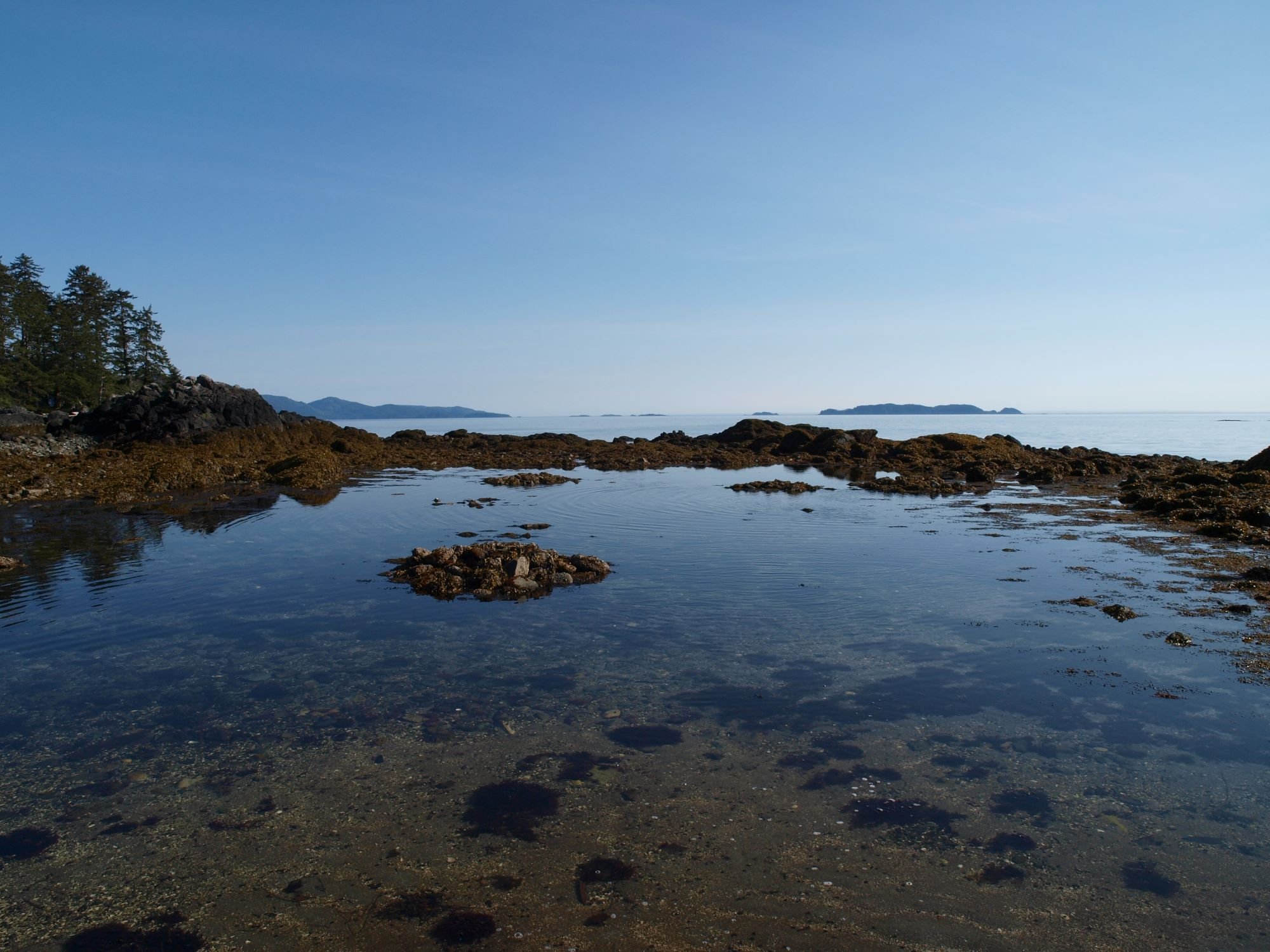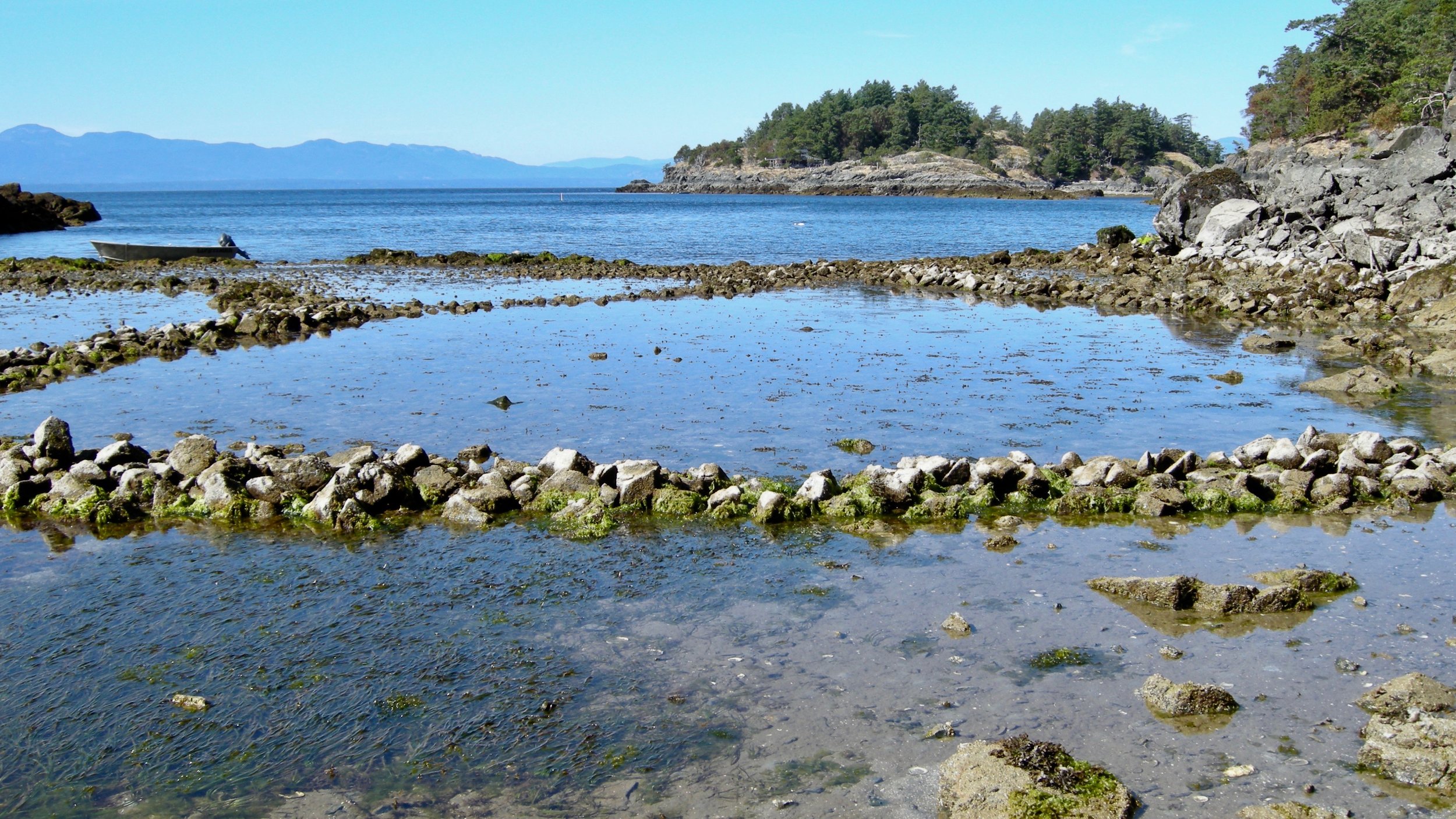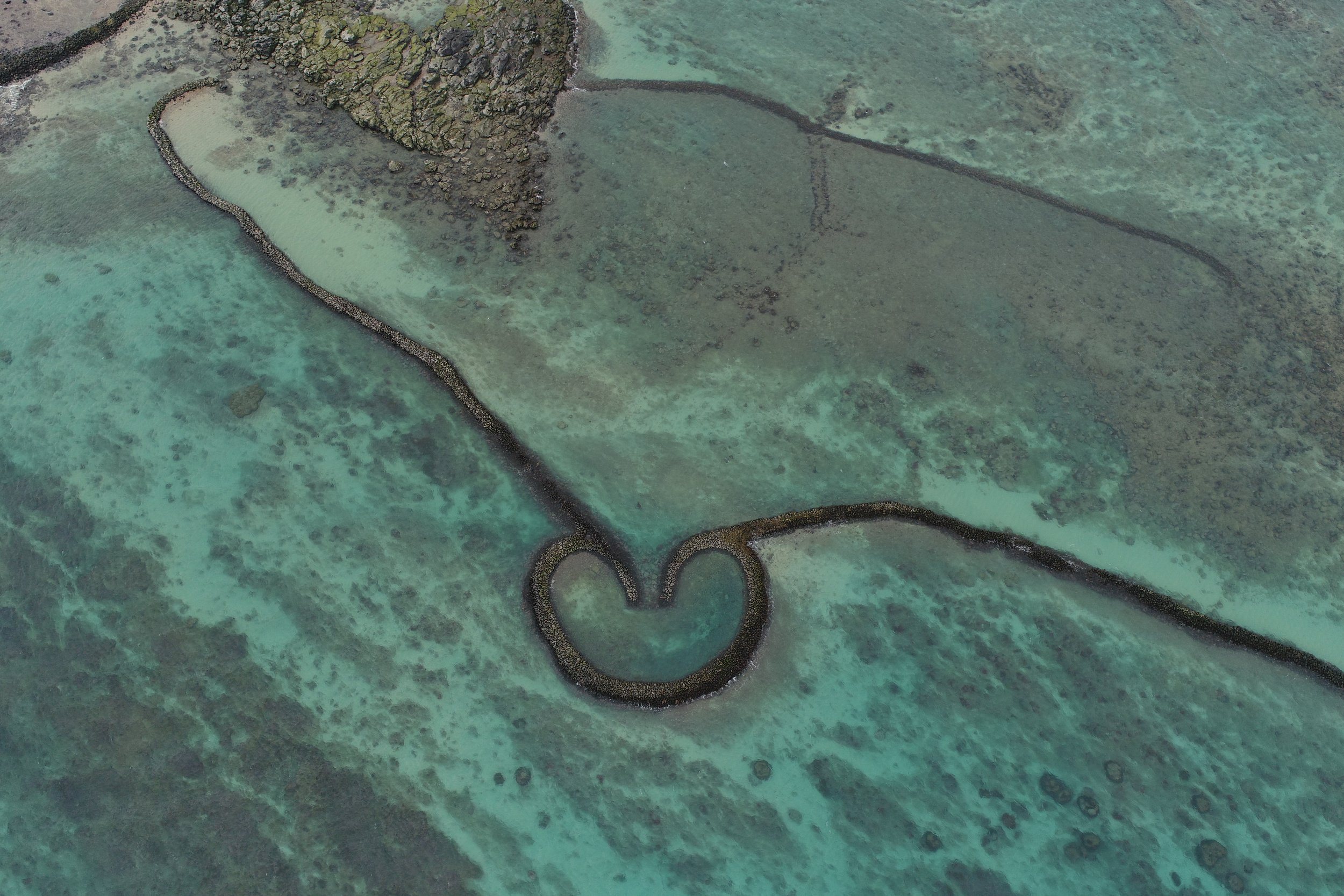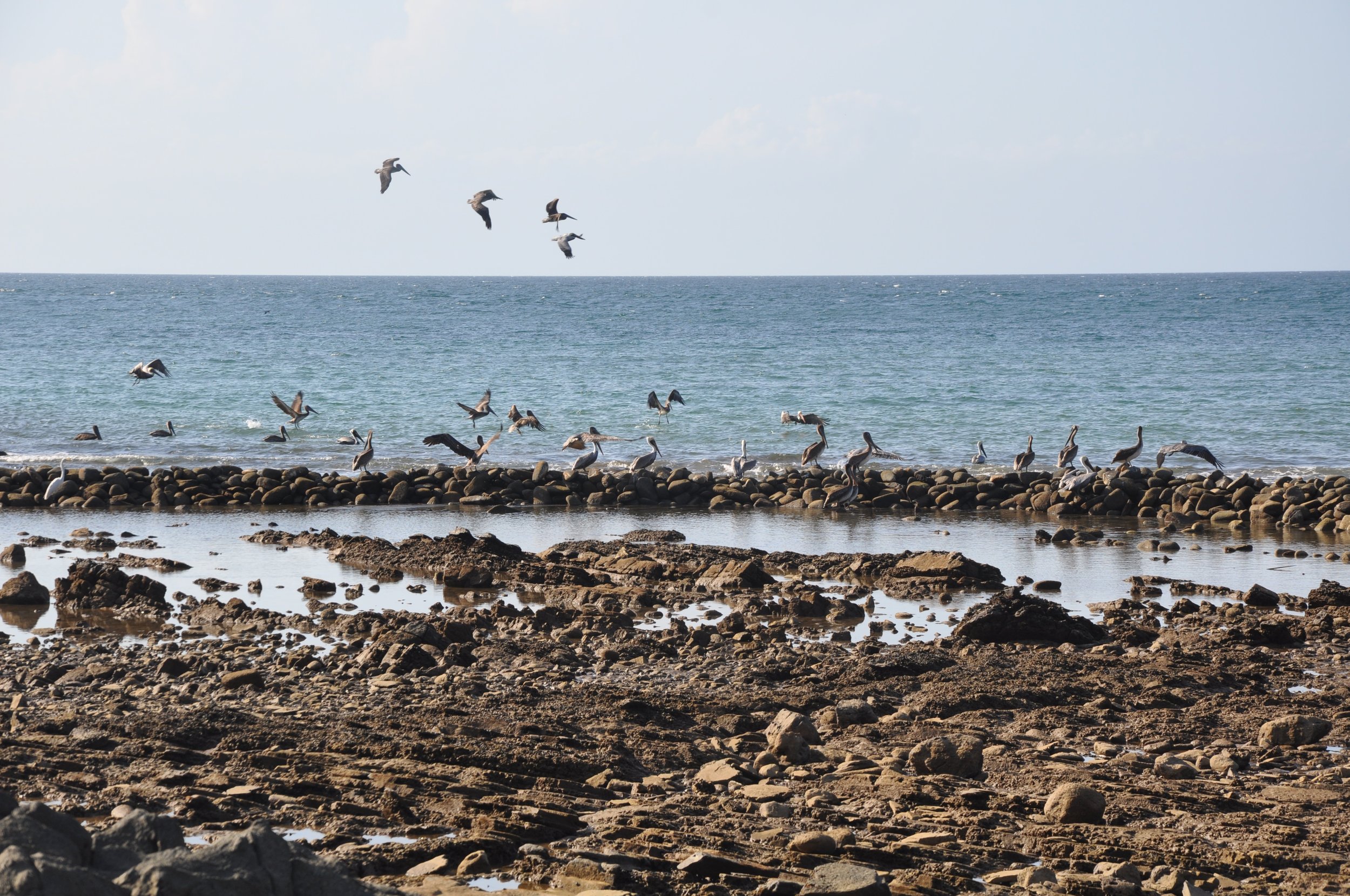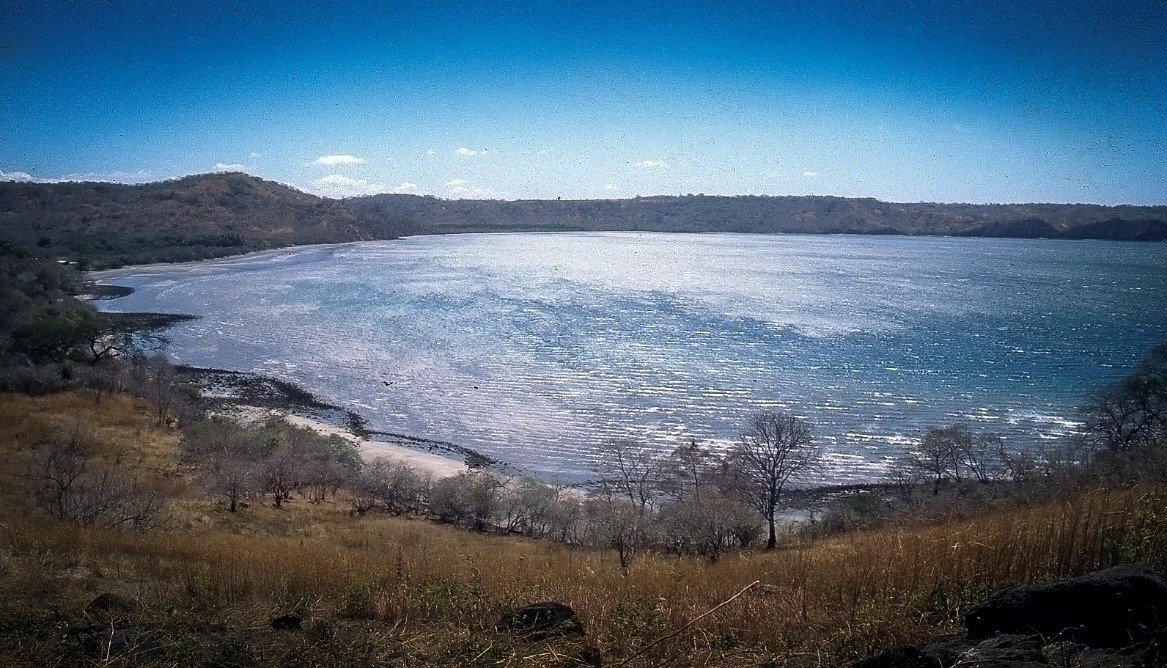Sea Gardens
Across
the Pacific
Reawakening Ancestral Mariculture Innovations
By the Pacific Sea Garden Collective
This work is dedicated to the Ancestors who stewarded the ocean, learned from her rhythms, and passed on their knowledge to today’s stewards who are continuing these practices and reasserting their authority to steward their lands and waters.
Why a Story Map?
Indigenous People have been stewarding the ocean for thousands of years. This interactive and “living” story map of sea gardens, begins to synthesize information about ancestral mariculture across the Pacific Ocean. Rooted in intergenerational knowledge, ecological ingenuity, sophisticated governance systems, spirituality, and cultural practices, the ancestral stewardship of sea gardens has strengthened connections between people and places for millennia.
Today, communities have been working hard to reawaken diverse sea gardens. Their re-emergence has fostered rising momentum to cultivate resilient, sustainable and equitable food systems, and marine governance in response to the dual challenges of declining ocean health and social inequalities.
This story map describes a variety of these ancestral innovations with short synopses linking to longer descriptions that cover the ancestral connection, geographic and temporal extents, biophysical manipulations, target species, ceremonial and stewardship practices, and current status. While this story map is not exhaustive, it represents the start of an effort to document the diversity of sea gardens around the Pacific. If you would like to see a mariculture innovation added, please feel free to reach out to us (SeaGardenCollective (at) gmail.com).
Who Are We?
We are a collective of Indigenous knowledge holders, community practitioners, university researchers, and artists working together to foster learning about sea gardens drawing from traditional and scientific knowledge with the vision of supporting their resurgence as adaptive strategies today.
How to cite: Pacific Sea Garden Collective. (2022). Sea Gardens Across the Pacific: Reawakening Ancestral Mariculture Innovations. Version 1. Washington Sea Grant at the University of Washington. https://doi.org/10.6069/ZJB9-CG30
Innovation Descriptions
Click an image to learn more
Pacific Sea Garden Collective
Contributors: Emily Akamine1, Ricardo Alvarez2, Brenda Asuncion3, Skye Augustine4, Scott Byram5, Richard Cooke6,7, Heather Earle4, Jacinta Forde8, Meredith Fraser4, Marco B. Hatch9, Francisco Herrera10, Anayensy Herrera Villalobos11, Jennifer Kahn12, Stephen Langdon13, Dana Lepofsky14, Daniella LoScerbo4, Isabelle Maurice-Hammond15, Kelsey Miller4, Amanda Millin16, Jaime Ojeda15,17, Melissa Poe1, Stewart Redwood18, Phil Ross19, Anne Salomon4, Nicole Smith20, Felipe Solís Del Vecchio21, Ally Stocks22, Vanessa Taikato23, Jimena Torres24, Te Rerekohu Tuterangiwhiu25, Kii'iljuus Barbara Wilson26, Cynthia Neri Zayas27
Illustrations: Lilly Crosby28
Map Design & Creation: Heather Earle4
Leads: Anne Salomon4, Heather Earle4, Melissa Poe1, Dana Lepofsky14
We thank Daniel Pauly for the idea and challenge to place sea gardens on a global map, and the Sea Grant Traditional and Local Knowledge Network for recognizing, understanding, and valuing the global importance of traditional knowledge and Indigenous leadership in marine education and stewardship.
